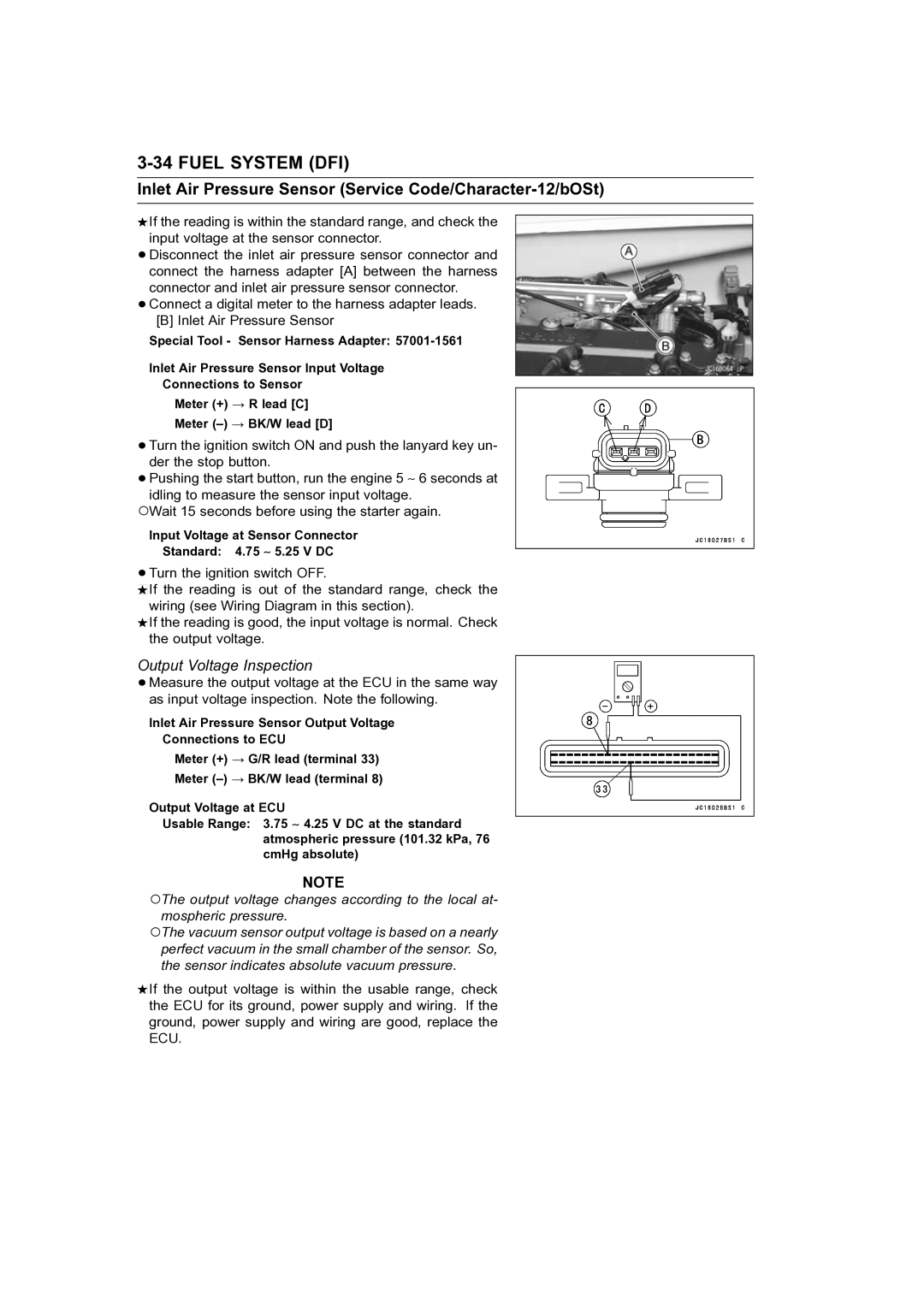
3-34 FUEL SYSTEM (DFI)
Inlet Air Pressure Sensor (Service Code/Character-12/bOSt)
![]() If the reading is within the standard range, and check the input voltage at the sensor connector.
If the reading is within the standard range, and check the input voltage at the sensor connector.
•Disconnect the inlet air pressure sensor connector and connect the harness adapter [A] between the harness connector and inlet air pressure sensor connector.
•Connect a digital meter to the harness adapter leads.
[B]Inlet Air Pressure Sensor
Special Tool - Sensor Harness Adapter:
Inlet Air Pressure Sensor Input Voltage
Connections to Sensor
Meter (+) → R lead [C]
Meter
•Turn the ignition switch ON and push the lanyard key un- der the stop button.
•Pushing the start button, run the engine 5 ∼ 6 seconds at idling to measure the sensor input voltage.
○Wait 15 seconds before using the starter again.
Input Voltage at Sensor Connector
Standard: 4.75 ∼ 5.25 V DC
•Turn the ignition switch OFF.
![]() If the reading is out of the standard range, check the wiring (see Wiring Diagram in this section).
If the reading is out of the standard range, check the wiring (see Wiring Diagram in this section).
![]() If the reading is good, the input voltage is normal. Check the output voltage.
If the reading is good, the input voltage is normal. Check the output voltage.
Output Voltage Inspection
•Measure the output voltage at the ECU in the same way as input voltage inspection. Note the following.
Inlet Air Pressure Sensor Output Voltage Connections to ECU
Meter (+) → G/R lead (terminal 33) Meter
Output Voltage at ECU
Usable Range: 3.75 ∼ 4.25 V DC at the standard atmospheric pressure (101.32 kPa, 76 cmHg absolute)
NOTE
○The output voltage changes according to the local at- mospheric pressure.
○The vacuum sensor output voltage is based on a nearly perfect vacuum in the small chamber of the sensor. So, the sensor indicates absolute vacuum pressure.
![]() If the output voltage is within the usable range, check the ECU for its ground, power supply and wiring. If the ground, power supply and wiring are good, replace the ECU.
If the output voltage is within the usable range, check the ECU for its ground, power supply and wiring. If the ground, power supply and wiring are good, replace the ECU.
